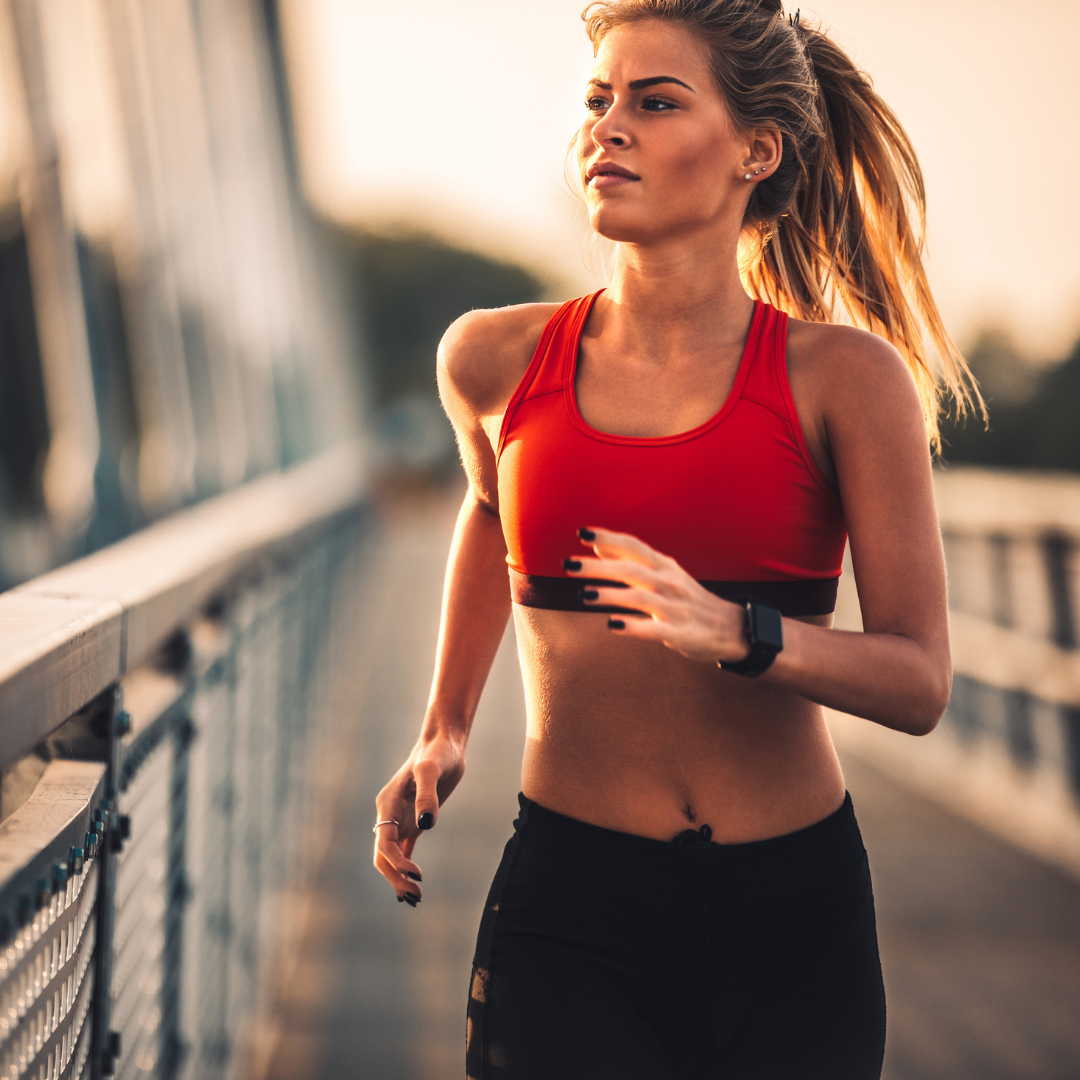Running: Transform Your Body and Health

"The journey of a thousand miles begins with a single step." - Lao Tzu This old quote from China perfectly shows how running changes your body and health, step by step. It talks about the power of running, whether you're new or already running a lot. This guide will show you all the ways running can make you healthier and happier.
Running is great for your heart and mind. It's a powerful exercise that can make big changes. Knowing how running works can help you live a better, more active life. It's all about unlocking your body's true potential.
Key Takeaways
- Running decreases the risk of death from any cause by about 27%.
- Running can contribute to weight management and weight loss when combined with a balanced diet.
- Running is associated with improved cardiovascular fitness, reducing the risk of heart attacks.
- Running has shown connections to improved mental health and mood.
- Running for just five minutes per day can add years to your life.
What Can Running Do to Your Body?
Physical Transformations
Choosing to run regularly leads to amazing changes in your body. You'll see your legs becoming lean and strong, your core getting tighter, and your overall shape improving. The beat of your feet on the ground works all your muscles, giving you a toned look.
What's more, running is great for burning calories. It helps in managing weight and lowering body fat, making you look fitter and more active. People who run vary in size, but regular running can get you to your fitness goals. These might be getting stronger, losing extra weight, or just feeling better about yourself.
Sculpting Lean Muscle: A 2015 study found that running leads to muscle growth. Running on hills or doing high-intensity interval training (HIIT) can also make your muscles work harder and make your legs stronger, according to Peloton coach Susie Chan.
- Strengthening Key Muscle Groups: Working on muscles like those in the hips, thighs, and buttocks can boost your running and lower injury risk.
- Core Stability: It's crucial to keep your core muscles strong when running, especially when running fast.
- Improving Posture and Efficiency: Exercises for the upper body, such as bent-over rows and push-ups, can make your running form better and more effective.
"A consistent running practice can help you achieve your desired physical goals, whether that's building strength, shedding excess weight, or simply feeling more confident in your own skin."
By working on these aspects, runners can reach their body's full potential. This leads to a stronger, more efficient, and better-looking physique.
Improved Cardiovascular Fitness
Running greatly benefits the heart and blood system. It pushes the heart, lungs, and blood vessels hard, leading to positive changes. It makes the heart stronger, improving blood flow around the body. This makes the circulation better and reduces blood pressure, cutting down the risk of heart issues and strokes7. Also, it reduces the risk of dying from any cause by 27%, which shows how great it is for health and life span.
The heart gains a lot from running. It cuts the risk of dying from heart issues by 50%. People who run a lot have bigger, stronger hearts than those who don't move much. They also have a low resting pulse and a high stamina, which means their hearts work efficiently and effectively. Running often leads to fewer deaths from heart issues and lowers the chance of heart diseases by running just 10 minutes daily.
Yet, there are some risks to be aware of. The biggest danger for older runners is heart disease. Also, running might affect sleep if you do it too late, because it releases happy hormones. It's a good idea for older runners to get checks on their heart health regularly to catch any problems early.
In summary, running's impact on the heart and health is huge. It makes the heart stronger, improves circulation, and lowers heart risks. Runners should be proud of how running not only improves their bodies but also protects their hearts. This leads to a longer life.
Stronger Bones and Joints
Many think running hurts your joints, but the opposite is true. It can make your bones stronger. When you run, your lower body bones feel little shocks. This makes them adjust and grow stronger. Over time, your bones also become denser, reducing the risk of osteoporosis. This is important because osteoporosis makes bones weak and prone to breaking.
The Impact of Running on Bone Density
Exercise keeps your bones strong. Bone is living and changes to meet exercise needs. Activities like brisk walking, jogging, and dancing help bones get stronger. They do this by working against gravity. It's not just running; strength training with weights also builds muscle. And stronger muscles help make your bones tougher.
But, too much of a good thing can be bad. Lots of running might lower your bone strength. Studies show that running with a force of 4G helps bones, especially in the hips. Yet, if you run very long distances, your bones might not be as strong. To avoid this, balance is key. Increase your running slowly to prevent too much strain.
For your bones to stay healthy, you need to eat well and get enough Vitamin D. The best bone mass is reached by your late twenties. Doing bone-strengthening activities when you're a teen is crucial for this.
Combine running with proper warm-ups and strength training to keep your bones and joints healthy. This also lowers the chance of getting hurt. Doing medium-strength exercise most days of the week is good for bone health. It's a smart idea for those with osteoporosis. Don't forget about muscle workouts. Include sets focused on different movements in your plan.
Understanding how running affects your bones is key. By balancing your exercise and diet, runners can maximise the positive effects.
"Weight-bearing exercises like running are crucial for maintaining bone strength as we age, but it's important to strike the right balance to avoid overuse injuries."
Increased Endurance and Power
Running changes your body loads. It doesn't just make you look better. It also makes you a fitter and better athlete. With regular running, your body gets better at using oxygen. This means you can run for longer and with less effort.
Your body makes more of something called mitochondria. These are like tiny powerhouses in your cells. They help make the energy your body needs to move. So, the more you run, the more power you have.
Adding sprints or interval training to your runs can add even more power and speed. This helps not just in running but in all kinds of sports. After doing this kind of training, people saw a 25% boost in their body's ability to use oxygen. This was more than those who ran for long distances. It turns out, how hard you train matters more for your oxygen use. But, to get more powerhouses (mitochondria), you'll need to run more.
Balancing different types of running in your training can do wonders for your performance. Mixing long runs with fast, short sprints will make you a better runner. Plus, it doesn't just help you run better. It makes you an all-round better athlete, ready for any challenge.
Mixing endurance running with power training is the secret to great running results. It boosts your ability to run longer and your oxygen use. This leads to being a stronger athlete and a great feeling of success.
"Adding sprints or interval training to your runs can make you faster and more powerful. This helps not just in running but in all kinds of sports."
Mental Health Benefits
Running doesn't just change your body; it boosts mental health too. It makes you happier and aids memory. Running outside fights loneliness and stress, reducing anxiety and depression. After a run, you feel less stressed and handle tough times better. It can even work as well as some medicines for anxiety and depression.
Running and Mental Wellbeing
Running releases endorphins that lift your mood and ease anxiety and depression. A long run especially brings joy and energy. It also builds new brain cells, enhancing mental performance. By increasing the hippocampus size, running lowers dementia risks.
Running adds about 5.3 years to life, mainly by cutting stress hormones. It also supercharges your self-esteem and resilience to stress. Plus, it helps you sleep deeply at night.
Joining a running group fights off loneliness and boosts mental health. A running buddy keeps you motivated and accountable. About a month is needed to feel at ease with regular running. Listen to your body to avoid pushing too hard.
Stick to your running plan rather than aiming for perfection. Resting between workouts prevents injuries. Also, slow down sometimes to protect your health.
"Running is an effective way to generate new brain cells, particularly in the hippocampus, which is responsible for long-term memory and decision-making."
Running is a great way to manage mental health or boost your mood naturally. It supports both your mind and emotions.
Proper Gear and Technique
Running comes with great benefits but it can also lead to injuries. Choosing the right running gear recommendations and paying attention to running technique are key. Good running shoes are a must-have. They protect your joints and lower the risk of problems like shin splints or plantar fasciitis.
It's also vital to focus on how you run. Watch your posture, your stride, and how your feet land. This can help you run better and lessen the strain on your muscles and joints. If you're unsure, it's wise to get advice from a coach or a health expert. They can help you run the right way for you and your goals.
Getting the best running gear recommendations and technique can transform how running feels and how well you perform. The right running shoes tailored to you are like magic. They make you feel comfortable, stable, and less prone to injuries. Focusing on the right running form and techniqueimproves your efficiency. This means running feels easier on your body and might help you achieve new bests.
- The ideal running pace is 170-185 steps per minute.
- To get better at running, try six 50m high-hopping reps on each leg with some walking in between.
- Doing squats helps get your muscles stronger, so you absorb less shock with each step. Try three sets of 10 reps.
- An exercise is to count how many times your right foot hits the ground in 20 seconds. You should aim for 30. This checks your pace.
- Start your run with 50m sprints but make sure your arms are swinging fully back and forth. This warms up your arm movement for the rest of your run.
- Running against a tyre can make you focus on pushing off from the hips with each step, training better movement.
- To improve your running posture, try keeping a slight gap between your knees as you run.
- Leaning too much forward makes you overstretch your steps. Aim to keep a straight upper body while running. This is better for you.
By including these running recommendations in your training, you can get the most from your running journey. You improve your performance and lower the risk of getting hurt. Keep at it and pay attention to how you run. This makes a big difference in finding the best running technique for you.
"Maintaining proper running form can lower the risk of injury and potentially lead to personal records."
Choosing the right running gear recommendations and mastering running form and technique can bring out the best in your running. It helps you run better and safer. By being consistent and careful, you can find the perfect running technique for you.
Injury Prevention
Running has lots of benefits for your health. But new runners must watch out for injuries. Overusing your body, like with too much running, can cause problems. These include runner's knee, IT band syndrome, and shin splints.
To avoid getting hurt, increase how much you run slowly. Don't make speed and distance bigger at the same time. This could be too much for your body. Always give your muscles time to recover with rest, good food, drink, and sleep. And be sure to know when muscle soreness is just soreness or if it's an injury needing help.
Doing other exercises like yoga can make your body stronger. This helps avoid getting injured from running too much. Make sure your running shoes are good quality. They should support your feet well. Stretching before and after a run is essential to stay flexible and not get hurt.
Older runners with joint problems should take extra care. By learning how to prevent injuries, you can keep enjoying running safely. Sign up for running tips and talk to doctors to know the best ways to stay injury-free.
Almost half of recreational runners get injured. Common spots are the Achilles tendon, calf, and knee. How you run, the shoes you wear, and upping your mileage suddenly can make you more likely to get hurt. To run without as much risk, you need a strong body, good technique, and the right shoes.
Adding certain exercises to your routine can help stop injuries. Try donkey kicks, single-leg balances, and stability ball moves. These make your body better at dealing with the stress of running. And plyometric exercises improve your ability to handle jump and stride motions, protecting you more.
"Maintaining a strong body, good form, and appropriate footwear are essential keys to minimising the risk of running injuries."
Cross-Training for Balance
Running is great for the heart, but mixing it with other activities is key. This keeps your fitness well-rounded. Cross-training, like using weights or trying yoga, helps fix muscle issues, boosts your strength and stretch, and lowers injury chances. Doing different exercises also helps your running muscles get more powerful. It also strengthens your chest and stomach.
Cross trainers are gentle on joints, so they're an easier workout than running hard. Just 30 minutes on a cross trainer is like running for 45 minutes to an hour. It's perfect for when you need a break from running. By mixing up what you do, you'll get in better shape and cut down the risk of getting hurt. This will help you reach your running dreams.
For runners, cross-training is vital for staying injury-free. This is really important because running injuries often happen when you overdo it or because your muscles are not balanced. Balancing well and being steady can lower the chance of certain injuries, like those in the knee area. Including exercises for balance and steadiness in your routine is a must to avoid getting hurt.
- Try doing exercises on one leg to get better at balancing.
- Work on your main and hip muscles, like doing planks and hip lifts, to get stronger.
- Doing exercises that mix balance and strength can make your workouts better.
For a good running schedule, aim to spend 1-2 days a week on activities other than running, and 2-3 days on strength workouts. Advanced cross trainers have many levels of resistance, changeable incline, and long strides. These features make them smoother and quieter to use. But you can also find simpler models for about £200.
Adding cross-training to your running, you tackle muscle issues, get stronger and more flexible, and cut down injury risk. This helps you in the long run with your running goals.
Conclusion
Running is more than just a way to stay active. It can seriously change your health and well-being. It makes your heart and bones stronger, boosts your mood, and improves how long you can keep going.
Thinking about running to look or feel better? It can help with that too. Knowing what running does for you helps you plan your runs better. This means you can focus on what matters most to you, like losing weight, toning up, or just feeling great.
When you decide to run, pick the right shoes and learn good running form to stay safe and get the most out of your runs. Making running part of your daily life can really change you for the better. It helps your body and mind become stronger than before.
Running's benefits are clear. It's great for your heart, mind, and body. It lowers the chance of early death, makes you feel better, and gives you more energy to live life. Trying to lose weight, get stronger, or just live healthier? Running can be a big help. It opens doors to staying fit and feeling good, helping you meet your health goals with bravery and focus.

